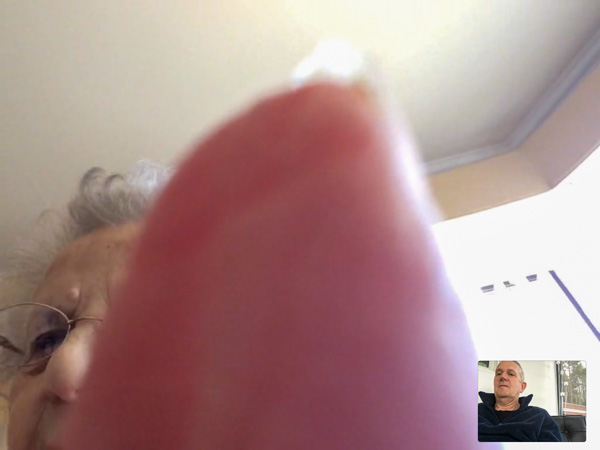
User Experience newsletter — April 2020
Enjoying a Mother's Day Facetime call with my mum's finger.

This month, with the 10% of my brain that’s not panicking about coronavirus, I’ve been thinking about ways of running remote research and supporting collaborative work.
I worked at BT Labs in the early 1990s and nearly every project was focused on videoconferencing. Most of the effort was focused on image quality and network engineering (compressing video over ISDN) but in the Human Factors Division we realised that the most important issues were human ones. All of the research I did seemed to suggest that videoconferencing was the dog that wouldn’t die. People always seemed too self conscious about how they appeared on video. Except for very specific tasks, no-one seemed to feel that video added anything over the standard voice offering. In fact, video was almost universally seen as a disadvantage. I remember speaking to one academic (a vision scientist) who made the point that a phone call was an opportunity for him to engage in some “personal grooming” and he didn’t think he could do that during a video call.
Even since that time, even with Skype and Facetime and Zoom, video calling has lagged behind — until now. It’s as if coronavirus has totally changed the culture. Right now, it doesn’t matter how you appear (everyone needs a haircut anyway). It doesn’t matter that people can read the book titles on the shelf behind you or judge your terrible taste in home furnishings. As the photo above shows, even my 90-year-old mum does it (although she’s not quite got the hang of checking the video preview). 30 years of technology and research and no-one realised that videoconferencing’s moment would be the time when humans faced a pandemic. Like I always say, context is key.
User researchers in UK Government have put together a toolkit of remote research tools. The toolkit includes tools for planning, recruitment, conducting research, analysis and communicating research. It’s an outstandingly useful resource.
That resource led me to Salma Patel’s list of tips for running remote user research, including suggestions for recruiting users, note-taking and running research.
My current project is to virtualise all of Userfocus’s face-to-face training courses so that I can deliver them live, online. This is a challenge, so I found this Twitter thread from Stephen Anderson useful.
Validately are offering credits for 5 x free 30-min remote moderated participant sessions for user researchers impacted by the lockdown.
Philip Hodgson and I ran an online Q&A covering topics in our book, Think Like a UX Researcher. I recorded the session and you can view it on YouTube.
Annual Reviews has made its catalog open access during the coronavirus outbreak. Here’s some journal article suggestions from psychology to keep user researchers and UX designers occupied if they’re working from home.
5-minute videos on UX
- What makes a good usability test? I answer the question, “You’ve spoken before about how a non-specialist can judge the quality of user research done in Discovery. But how do you decide if a usability test has been run the right way?”
- Doing User Research During a Pandemic. I answer the question, “It appears the spread of the coronavirus is inevitable. I’m wondering if you have any suggestions on how to do user research during this pandemic? Especially when one must be in close proximity to ask questions.”
- Traps for Usability Test Moderators. I answer the question, “What advice do you have for someone about to moderate a usability test for the first time?”.
- Revenue streams for freelance user researchers. I answer the question, “Until last week, I was working as a user researcher in the travel industry. I’m a freelancer and my contract has been cancelled. Any suggestions on getting work?”
- Alternatives to field research in lockdown. I answer the question, “In my company, there is rarely budget and time to do field visits, especially if they were just done the year prior with the same audience. How do you recommend understanding users’ needs, goals and motivations without costly field research for each project?”
Want me to answer a UX-related question in a future video? Just reply to this email.
Thanks for reading. If you find this newsletter useful and want to support it, forward it to someone who’d like it or, even better, buy them a copy of Think Like a UX Researcher.
If you’re seeing this newsletter for the first time, you can subscribe here.
David Travis.
|